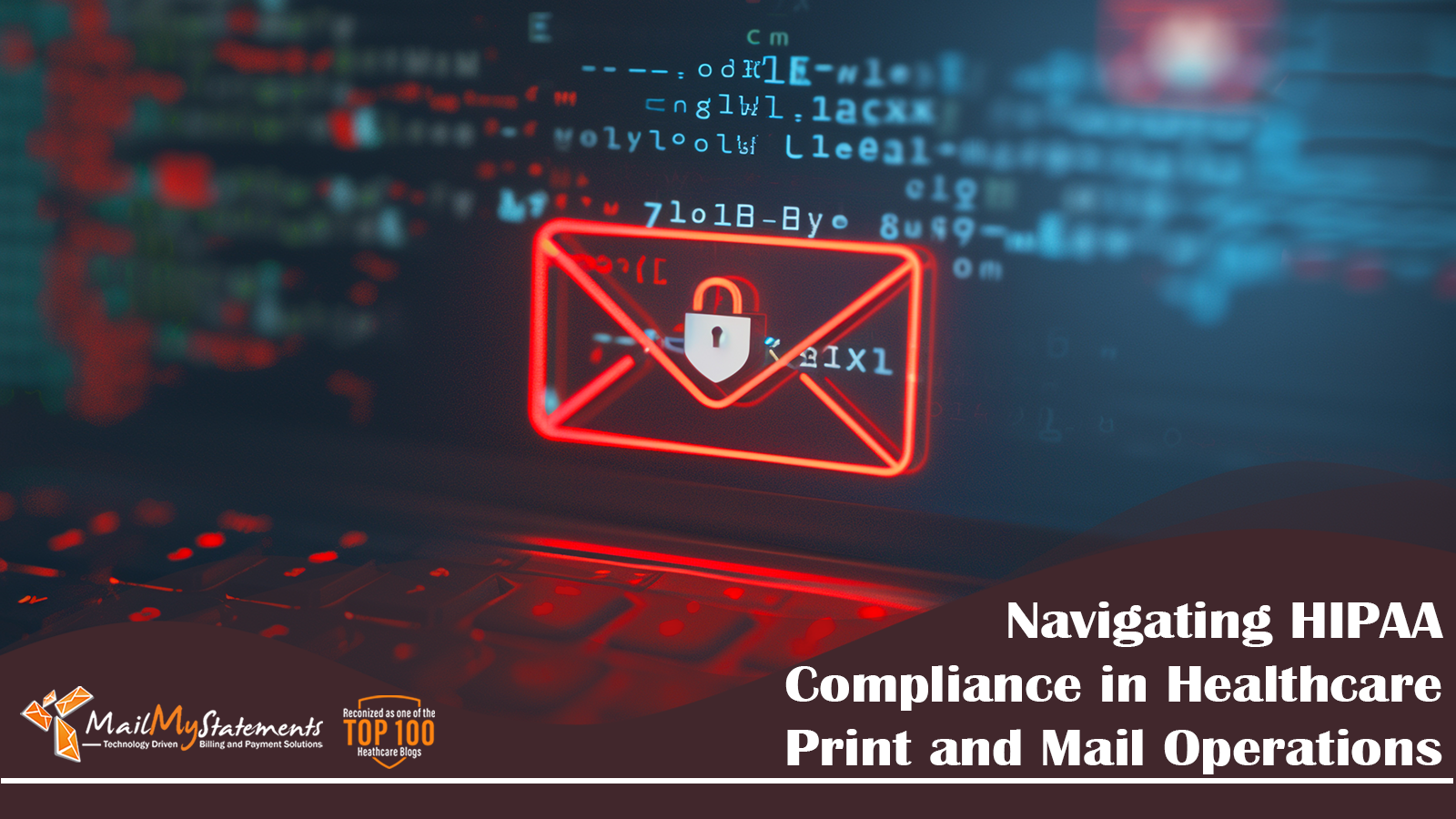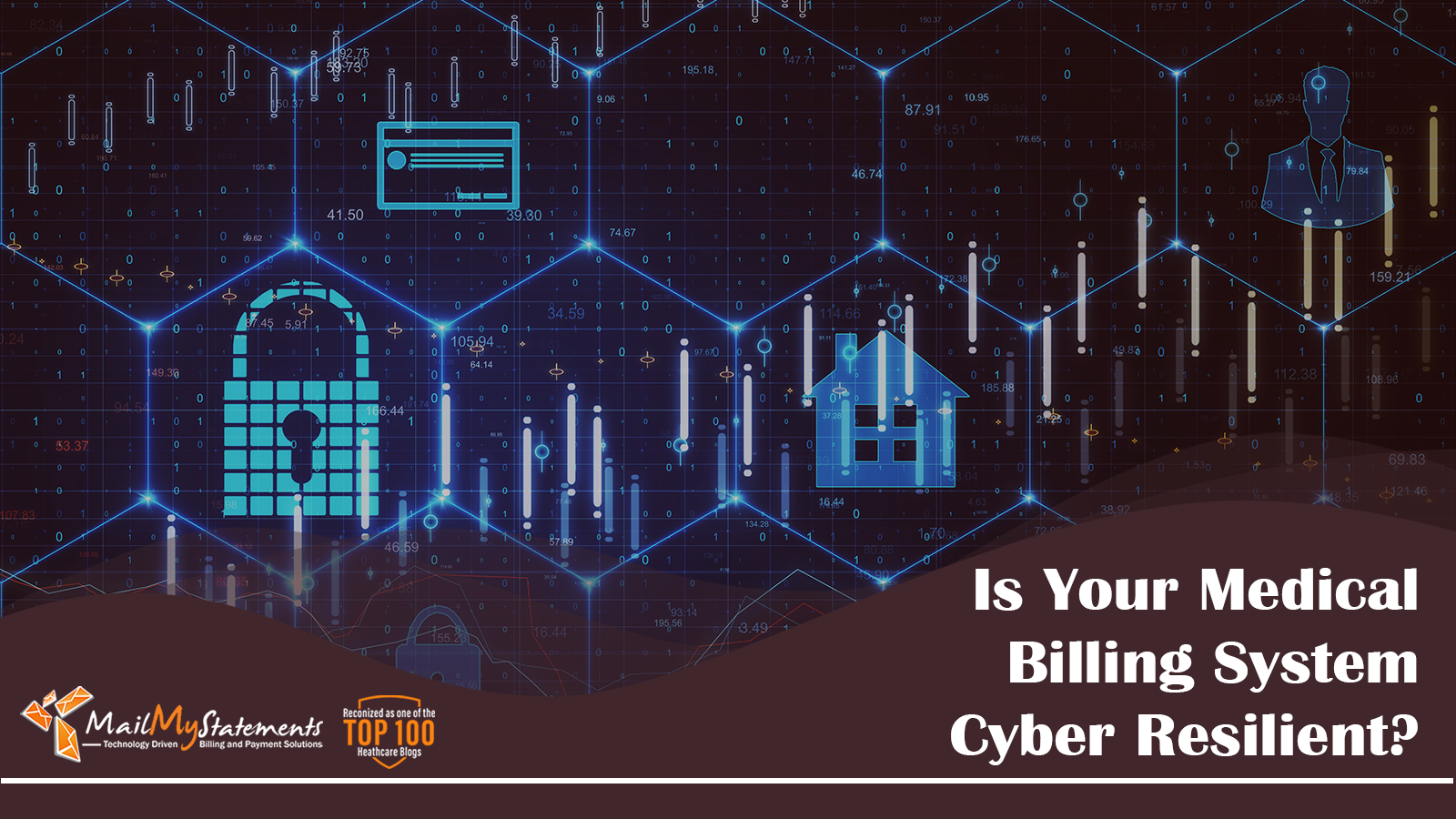Navigating HIPAA Compliance in Healthcare Print and Mail Operations

Today’s healthcare decision-makers juggle revenue cycles, patient satisfaction, and regulatory compliance daily. Among these priorities, the print and mail operations — often overlooked as a routine administrative task — carry significant weight when it comes to safeguarding patient privacy under the Health Insurance Portability and Accountability Act (HIPAA). Whether mailing billing statements, appointment reminders, or insurance explanations, healthcare organizations must ensure that Protected Health Information (PHI) remains secure, especially as reliance on both in-house and outsourced print and mail services grows. For providers, understanding how to navigate HIPAA compliance in healthcare print and mail operations isn’t just about avoiding penalties — it’s about protecting patient trust and optimizing operational efficiency. This article offers actionable insights into maintaining privacy and security in healthcare print and mail, whether managed internally or outsourced.
The Stakes of HIPAA Compliance in Healthcare Print and Mail
HIPAA’s Privacy and Security Rules set strict standards for handling PHI, defined as any individually identifiable health information transmitted or maintained in any form — paper included. Violations can be costly: fines range from $137 to $68,928 per violation (adjusted for inflation in 2025), with a maximum of $2.07 million annually for repeated breaches of the same provision, according to HHS. Beyond financial penalties, breaches erode patient confidence — 62% of patients would consider switching providers after a data privacy incident.
Print and mail operations are particularly vulnerable. A misaddressed envelope, an unsecured printer, or a vendor’s lax process can expose PHI to unauthorized eyes. In 2023 alone, HHS reported over 700 breaches affecting 500 or more individuals, with paper-based incidents accounting for roughly 8% of cases. For providers, ensuring compliance in this domain is both a legal mandate and a strategic imperative as patient expectations for privacy soar.

In-House Print and Mail: Building a Secure Foundation
Managing print and mail internally offers control but demands rigorous processes to meet HIPAA standards. Financial leaders must assess every step — data extraction, printing, mailing, and disposal — to eliminate risks.
Start with access controls. Limit PHI handling to trained staff with a “need to know,” using role-based permissions in your electronic health record (EHR) or billing systems. Physical security matters too — lock printers and mailrooms, and install surveillance where feasible. A 2024 Crowe Healthcare report noted that 15% of paper-related breaches stemmed from unsecured office equipment, underscoring the need for vigilance.
Next, secure the printing process. Use HIPAA-compliant software that encrypts PHI during transmission from EHRs to printers. Modern devices like those from Xerox or Ricoh offer features like user authentication and automatic data wiping after printing. For statements or Explanation of Benefits (EOBs), implement double-checks to ensure correct patient addresses — automation tools can cross-reference data, reducing human error.
Finally, mail preparation and disposal require attention. Seal envelopes with tamper-evident tape, and train staff to spot defects. Shred undeliverable mail or partner with a certified destruction service — HIPAA mandates that PHI be rendered “unreadable” before disposal. Regular audits, as recommended by the Office for Civil Rights (OCR), can identify gaps before they become breaches. While in-house operations give you oversight, they demand investment in technology and training — costs that financial leaders must weigh against outsourcing.
Outsourcing Print and Mail: Vetting Vendors for Compliance
Outsourcing print and mail can reduce overhead and improve efficiency, especially for large-scale operations like monthly billing runs. However, it shifts some responsibility to third-party vendors, making due diligence critical. Under HIPAA, these vendors are Business Associates (BAs), legally bound to protect PHI via a Business Associate Agreement (BAA).
The BAA is your first line of defense. Ensure it specifies the vendor’s obligations: safeguarding PHI, reporting breaches within 60 days, and allowing audits. A 2023 breach involving a mail vendor exposed 1.2 million patients’ PHI due to a missing BAA clause on encryption — don’t let vague contracts be your downfall.
Evaluate vendors’ security practices. Ask: Do they encrypt PHI in transit and at rest? Are their facilities SOC 2-certified or HITRUST-compliant? Do they use secure mail carriers with tracking? Reputable vendors like MailMyStatements often advertise both HITRUST and HIPAA-ready workflows — verify these claims with documentation. Recent data indicates that 73% of healthcare organizations now prioritize vendors with proven compliance track records, a trend financial leaders should heed.
Monitor performance too. Require regular security assessments and breach reports. If outsourcing internationally, confirm compliance with U.S. HIPAA standards — offshore vendors may face additional scrutiny. While outsourcing shifts operational burden, it doesn’t absolve you of liability — HHS holds covered entities accountable for BA failures, as seen in a $2.3 million settlement with a provider in 2022.
Hybrid Approaches: Balancing Control and Convenience
Some organizations blend in-house and outsourced models, printing sensitive documents internally while outsourcing bulk mailings. This hybrid approach demands seamless integration. Use encrypted file transfers (e.g., SFTP) to send data to vendors, and standardize processes across both channels. Regular staff training — covering HIPAA updates like the 2024 OCR guidance on mail security — ensures consistency.
Technology as a Compliance Ally
Leveraging technology can simplify compliance. Intelligent print management software tracks PHI from creation to delivery, logging access for audit trails. Address verification tools, reduce misdirected mail — a leading breach cause. For outsourced work, blockchain-based tracking could offer tamper-proof delivery records. Invest in these tools strategically — while upfront costs sting, they pale against breach penalties or lost patient trust.
Training and Culture: The Human Element
Technology and contracts mean little without a compliance-focused culture. Train staff annually on HIPAA basics — use real-world scenarios, like a lost mailbag exposing 500 records (a 2023 incident).
Foster accountability: a 2024 HFMA report found organizations with regular compliance refreshers saw 30% fewer breaches. For vendors, require proof of employee training in your BAA. A vigilant team is your best defense.
Financial Implications and ROI
Compliance isn’t cheap — training, tech upgrades, and vendor fees add up. Yet, the ROI is clear. The average healthcare breach cost is now $10.1 million, dwarfing prevention investments. Efficient print and mail also boost collections — clear, timely statements lift self-pay recovery by 15%. For financial leaders, compliance is a dual win: risk mitigation and revenue protection.
Final Thoughts
Navigating HIPAA compliance in healthcare print and mail operations requires a proactive, layered approach. Whether managing internally with secure processes, outsourcing to vetted vendors, or blending both, healthcare decision-makers must prioritize PHI protection at every turn. Technology and training amplify these efforts, turning a regulatory burden into a strategic asset. In 2025, as patient privacy demands intensify, organizations that master this balance will safeguard their bottom line — and their reputation — while keeping trust intact. Compliance isn’t just a checkbox; it’s a cornerstone of sustainable healthcare finance.
Contact MailMyStatements today to discover how our HITRUST Certified and HIPAA-Compliant print and mail solutions streamline medical billing through simplified management, real-time analytics, and intelligent automation.
![]()



